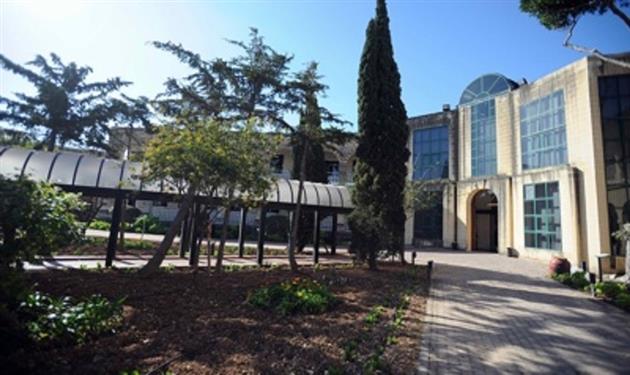Two of Malta’s most vocal environmentalists have blasted MEPA’s new Rural Policy and Design Guidance document, with fears that abuse of these policies could be inevitable.
MEPA has recently published the revised Rural Policy and Design Guidance, which will regulate the future use of land in Outside Development Zones (ODZ).
Flimkien ghal Ambjent Ahjar is in favour of support to genuine farmers, FAA Coordinator Astrid Vella said, “however the introduction of “farmer-entrepreneur” partnerships confirms that the aim of this policy is not just to support the agricultural sector as claimed, as developers will be permitted to rent agricultural holdings from farmers in order to reach the required size of site. Furthermore, FAA is taken aback to see that instead of encouraging the re-use of old buildings, the floor space allowed for newly-built accommodation – 400m2 – is twice that of converted old buildings!”
“Claiming that entrepreneurs are to be bound by contractual obligations is no reassurance in Malta, where MEPA has a backlog of some 7,000 cases of abuse which are increasing daily, with no real commitment to tackle them. Since this policy cannot be properly enforced, it becomes yet another means to continue the cementification [sic] of our islands at the expense of the countryside, which is so essential to residents’ recreation and their physical and mental health,” Mrs Vella added.

With reference to policy 6.2, which deals with the rehabilitation and redevelopment of existing buildings, AD Deputy Chairman Carmel Cacopardo said that the “philosophy is that if permission is granted, then they will consider converting the building to anything, so a farm building can be converted to a block of flats”.
Policy 6.2C of the document states that permission may be granted for the total redevelopment of an existing building, or the consolidation of buildings, located outside a development zone, provided that certain criteria are satisfied.

Another issue here is that redevelopment could see a rise in height from the original structure. A MEPA official, speaking with The Malta Independent on Sunday, said: “The policy allows for the replacement building to be higher than the existing one (by means of the reduced footprint), with conditions; one of which is the developer’s respect for the site’s rural context. Another is that the replacement building does not exceed the total floor area of the previous building”.
The term ‘floor space’ in the document is measured externally and incorporates the area of all floors, including wall-thickness, internal open spaces (e.g. shafts and internal courtyards) and roofed-over, enclosed spaces but excludes basement levels and any common parts (e.g., shared entrance halls and stairwells). This means that in order for a building to be extended vertically, it must reduce its overall ground level footprint.

Concern over the new policies
Contacted yesterday, AD Deputy Chairman Carmel Cacopardo expressed worry at certain policies within the document.
“If a farmer has many animals then yes, he should be allowed to build a house. However, another question comes into play. The policy states that the building can be converted into a dwelling, as long as it has a minimum habitable area of 100m2. However, if there is more than one dwelling, they cannot be less than 150 m2. I suspect that this policy was tailor made for a particular area or person.
He also spoke about the utility services policy in the document. The document read; “Proposed works for the provision of utility services, including those for electricity and water supply, drainage and sewage disposal, shall be subject to consultation with the respective Departments/Authorities and shall, wherever possible, be located underground, within trenches under existing legitimate roads or tracks. Where required, an underground leak-proof cesspit shall be incorporated beneath the proposed building or immediately next to the existing building which it is intended to serve”.
Mr Cacopardo said that during the consultation period, he insisted that prior to trenches being dug, the possible use of alternative energy sources be explored in order to reduce the impact on the area.
He also spoke about the agri-tourism policy section. “If one has a building to convert for agri-tourism purposes, then it must be between 150m2 and 200 m2, but if one wants to build a new one, it must be no larger than 400m2. This should be the other way around”.

Policies not accompanied by studies – Astrid Vella
Flimkien ghal Ambjent Ahjar Coordinator Astrid Vella, speaking with this newspaper, said: “Some years ago, the highest authorities had admitted that MEPA’s farms and stables policy had been a serious mistake, which generated more buildings and abuse in the countryside and pledged to rescind it”.
“Not only has this pledge not been honoured, but the new policy extends the permissible structures far wider than stables; agro-tourism accommodation is the focus of public attention, however it is the tip of the iceberg, as the policy also allows ‘boutique wineries’, olive oil production, bee-keeping and honey processing, farm shops, visitor attractions, farm dwellings beyond agricultural buildings as well as stables. The negative impact will be multiplied by the increase in roads, which will have to be built or widened, as well as car parks, with the consequent increase in traffic in the countryside”.
The agri-tourism policy section does hold certain safeguards, particularly when it comes to building new buildings for this purpose. One safeguard, for example, is that farming activity must have been in operation for five years prior to the application.
“As usual, this new policy is not accompanied by any studies which prove that such structures are justified by a real demand. Scheduled locations, that is, Sites of Archaeological importance, Areas of Ecological Importance/Sites of Scientific Importance have not been ruled out,” she added.
The document includes, in a number of policies, that: “Scheduled locations (Class A or Class B Area/Site of Archaeological Importance, and/or Level 1 or 2 Area of Ecological Importance/Site of Scientific Importance) are in principle considered inappropriate locations, unless it can be duly demonstrated through the necessary assessment, that the development does not compromise the site scheduling characteristics
Although certain safeguards have been put in place, both Mr Cacopardo and Mrs Vella have expressed concern over possible abuse of the policies.